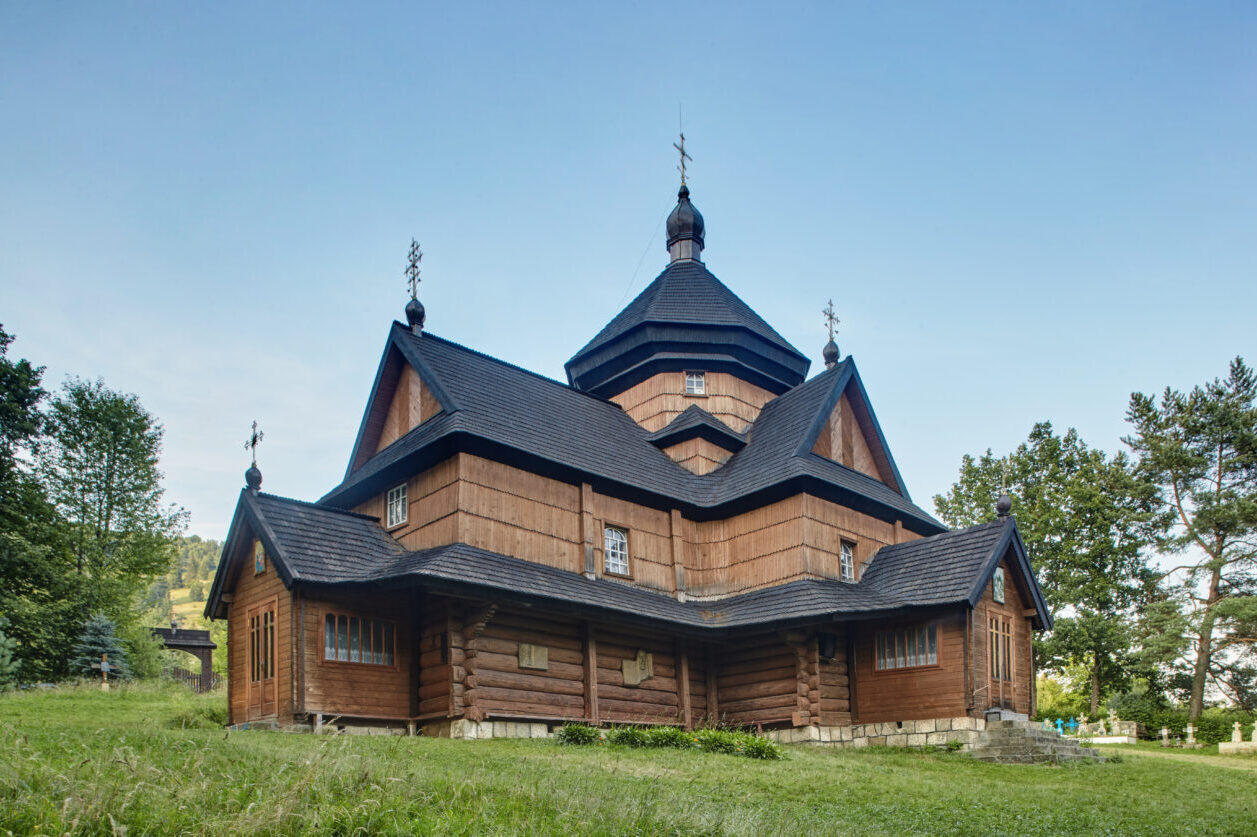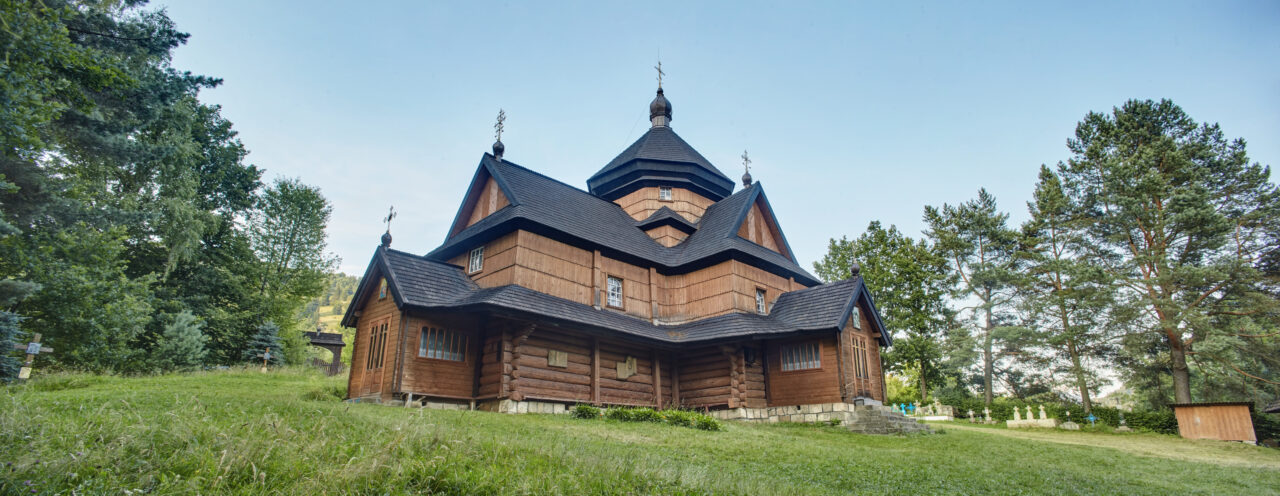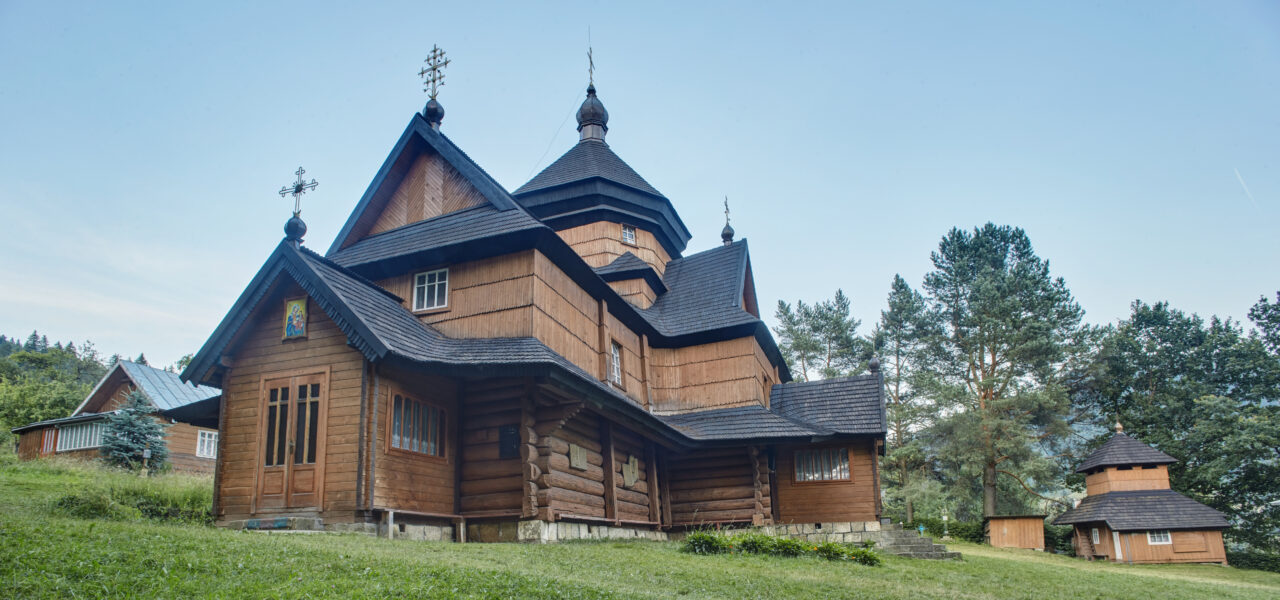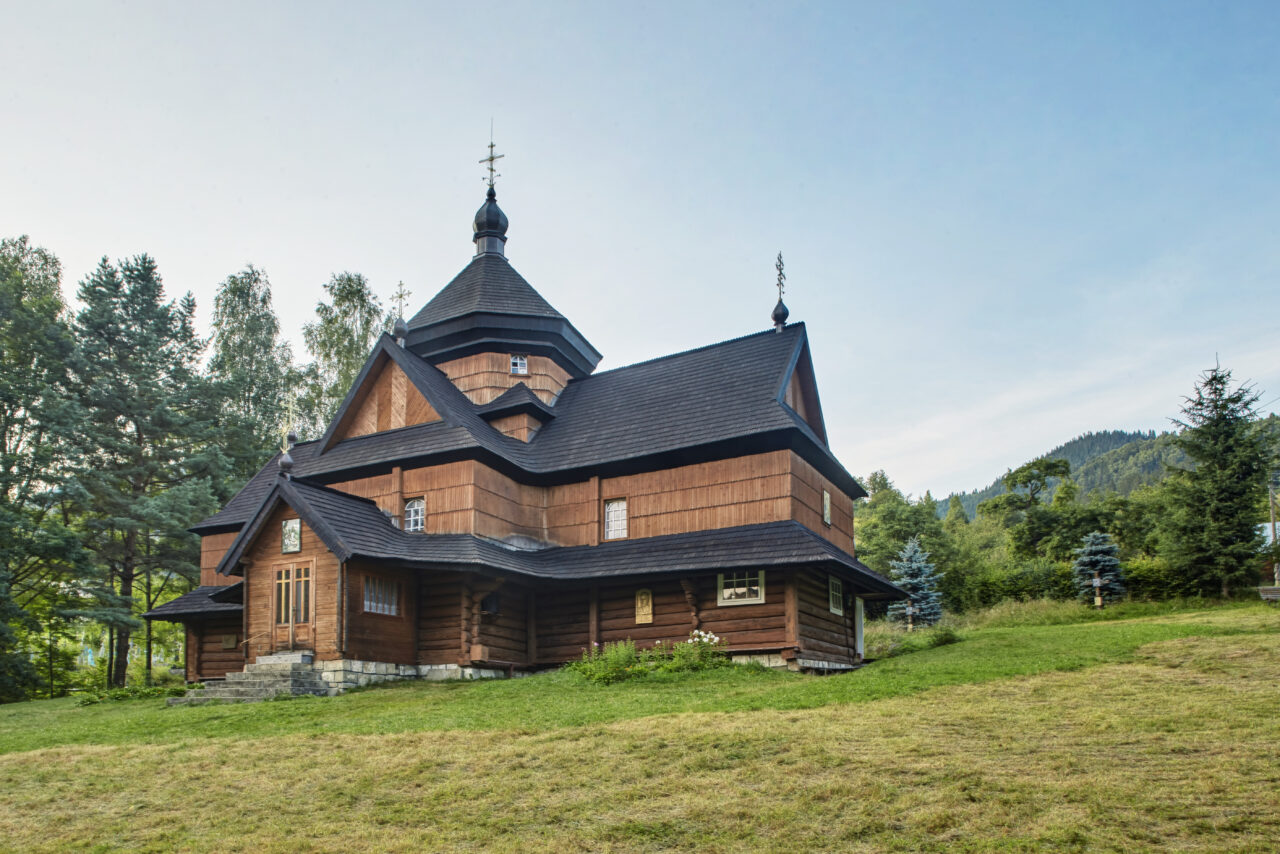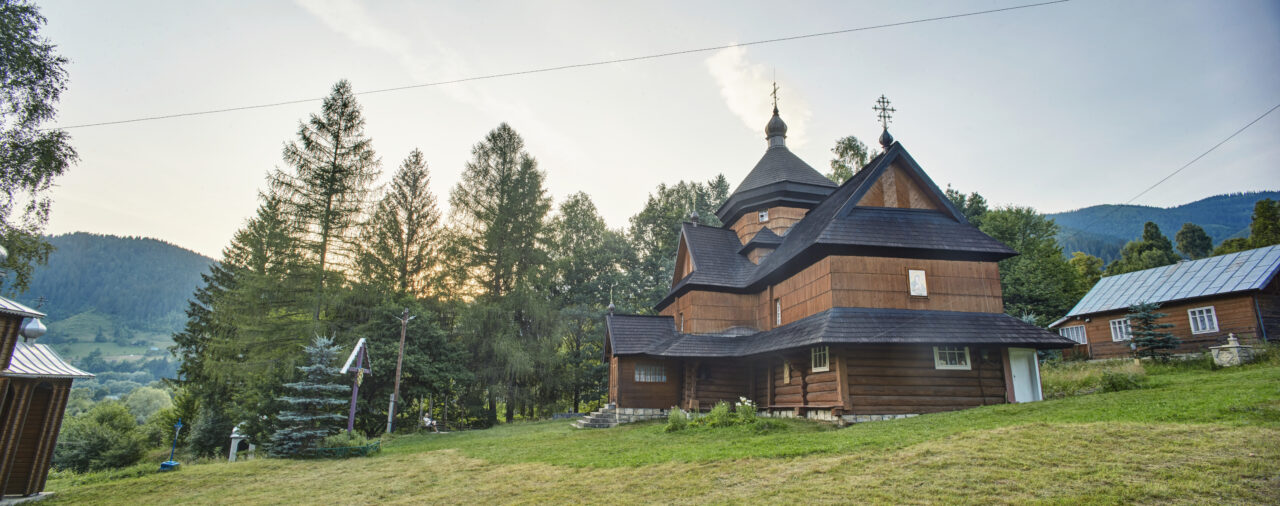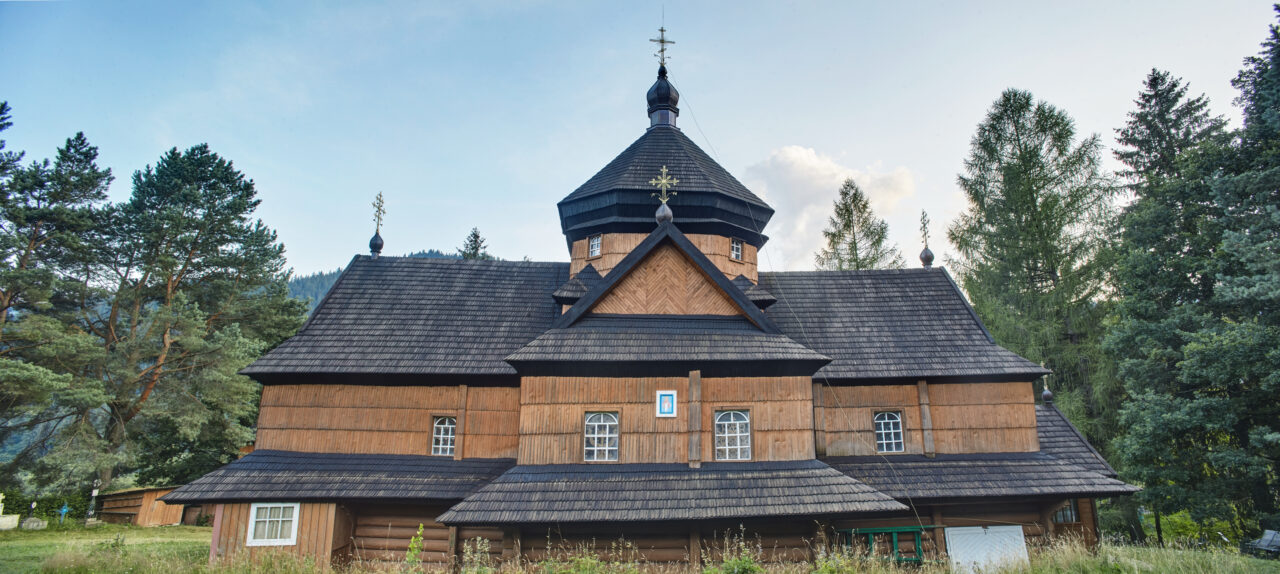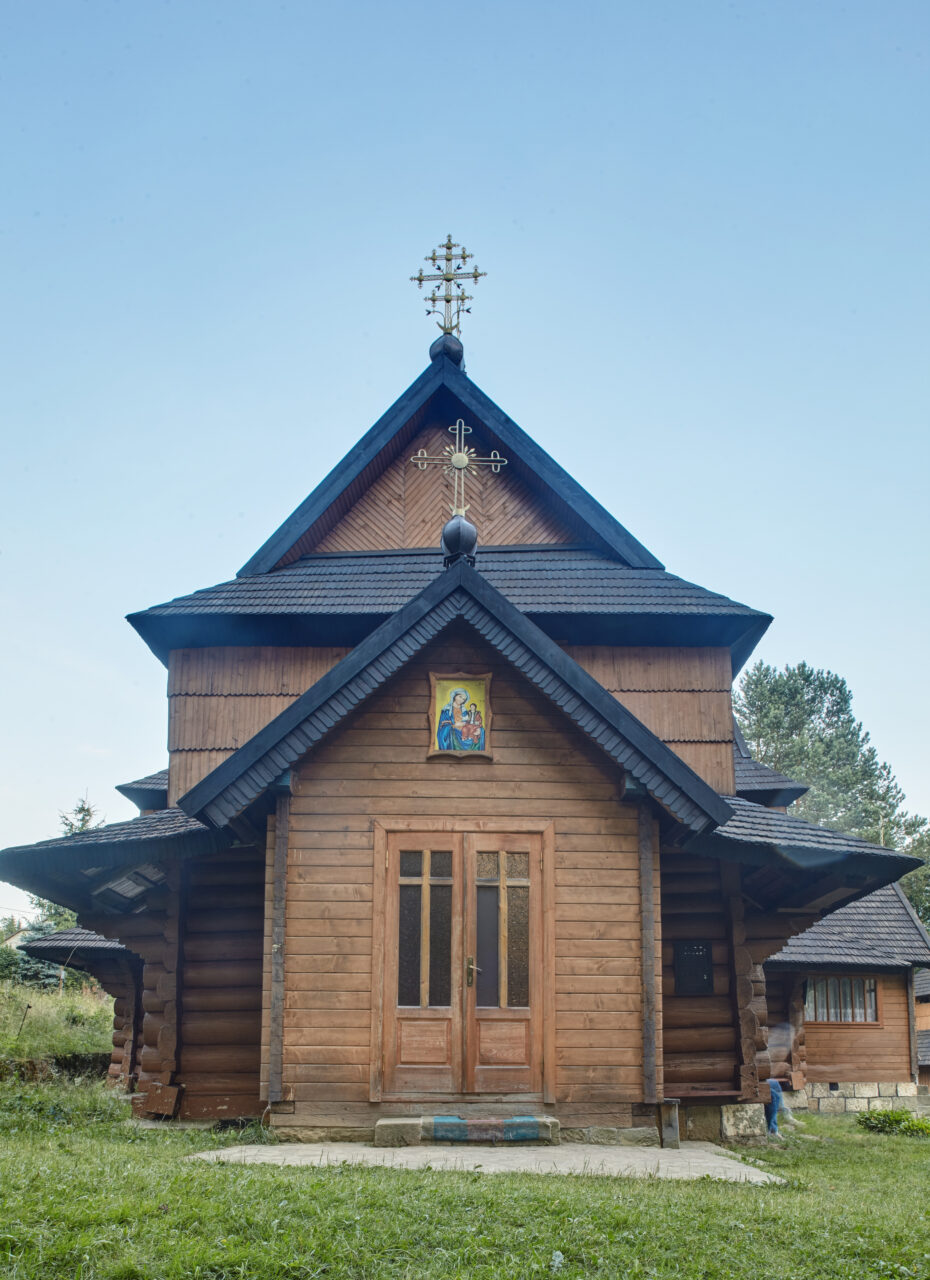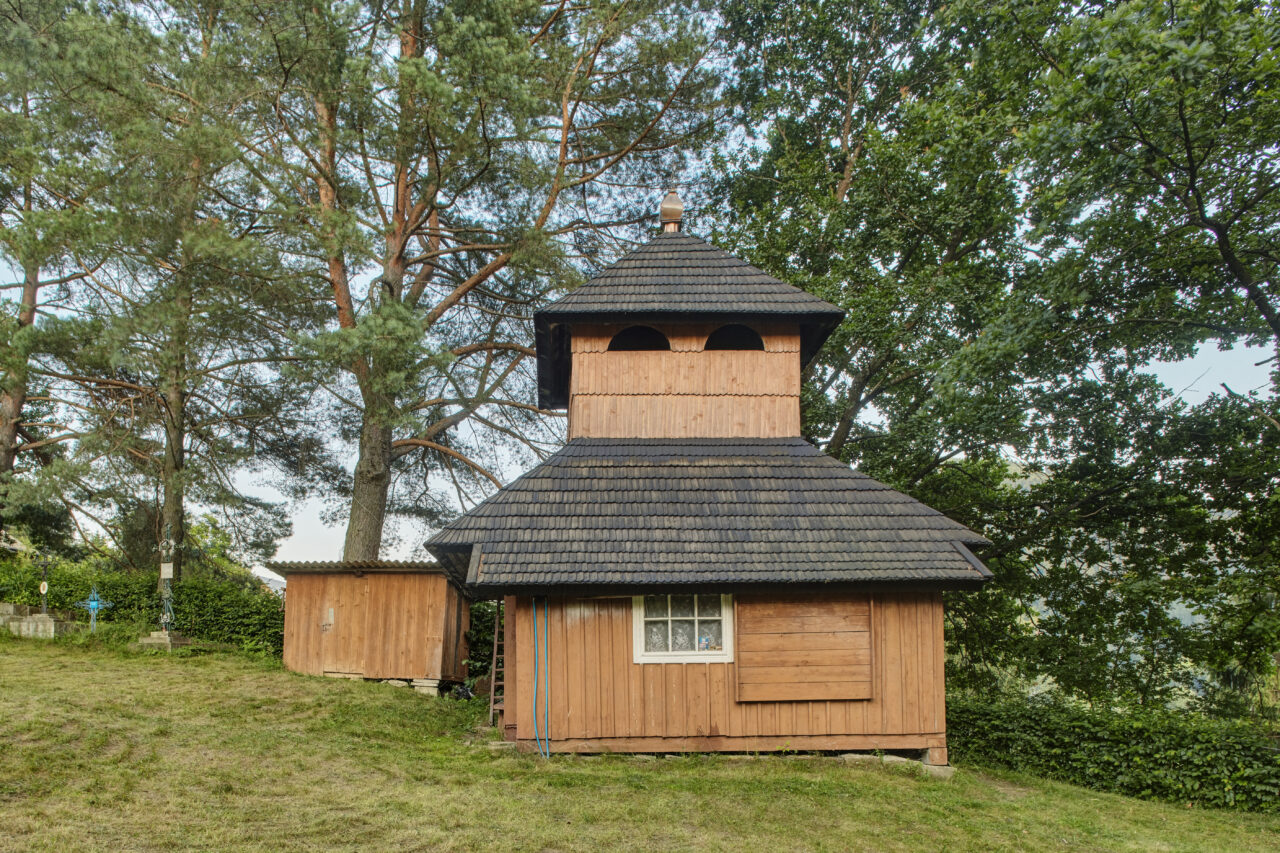The official date of the church foundation is 1719 as evidenced by the inscription hidden under the roof over the west porch. According to tradition, the church was moved to a hill from the village of Zarichia, located on the other side of the river Chornyi Cheremosh. The first reference to it dates back to the 1660s. The church was moved to its current location in 1719. In this regard, it is not known for sure whether 1719 was the year of the church construction or the year of its relocation.
Some prominent Ukrainians, like Yakiv Holovatskyi, Ivan Franko, Mykhailo Hrushevskyi, Mykhailo Kotsiubynskyi, Hnat Khotkevych, Lesia Ukrainka, Volodymyr Hnatyuk and many other outstanding figures of the Ukrainian culture prayed in the church together with the residents of Kryvorivnia. In 1901, Metropolitan Archbishop Andrey Sheptytsky (then Bishop of Stanyslaviv) paid a pastoral visit to the church and wrote a pastoral message To My Beloved Hutsuls in the Hutsul dialect.
The church is made of wood and has a cruciform architecture. The church architecture comprises short side branches and an elongated narthex. The central dome is covered by a tented roof on a low octagonal structure rising above the roofs of the church branches.
In the 1970s, the church was clad in metal plates, and that is how it was depicted in tourist guides. Owing to the local community led by the parish priest Fr. Ivan Rybaruk, in 2011 the original exterior with the wooden roof was restored.
The characteristic of the church is that during these three centuries, despite all the hardships, it was never closed and always held church services.
Architectural monument of national importance.

